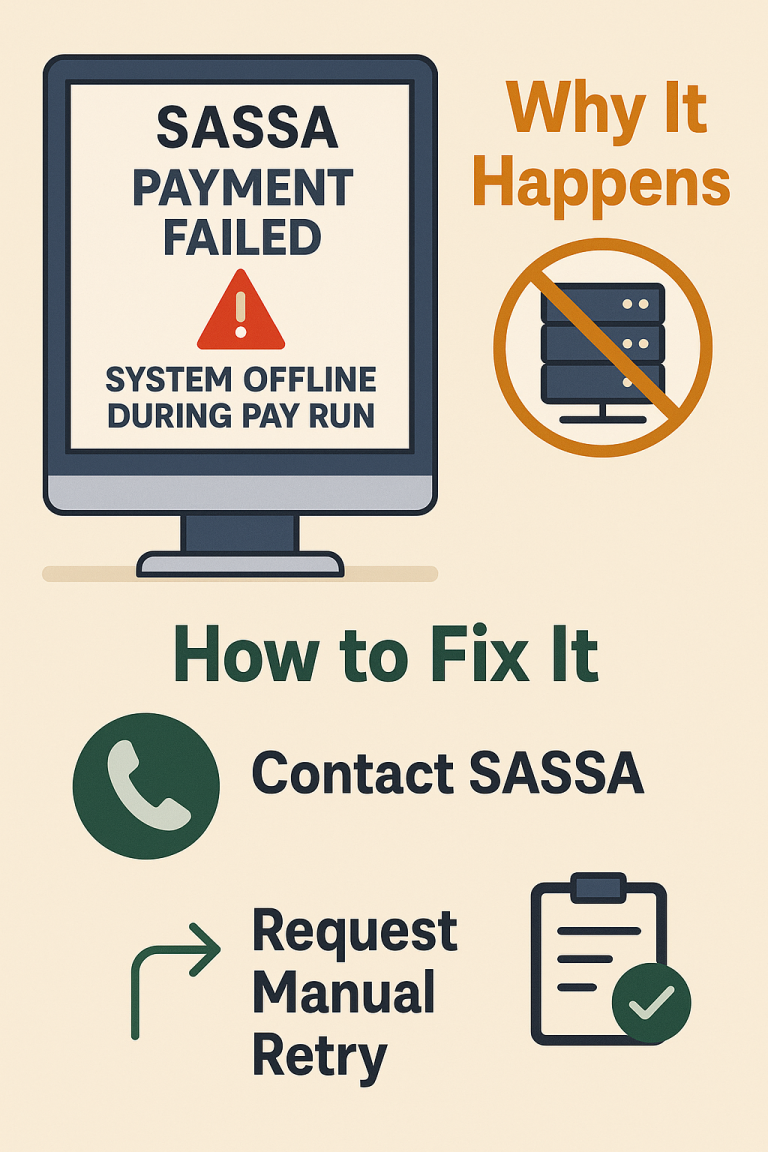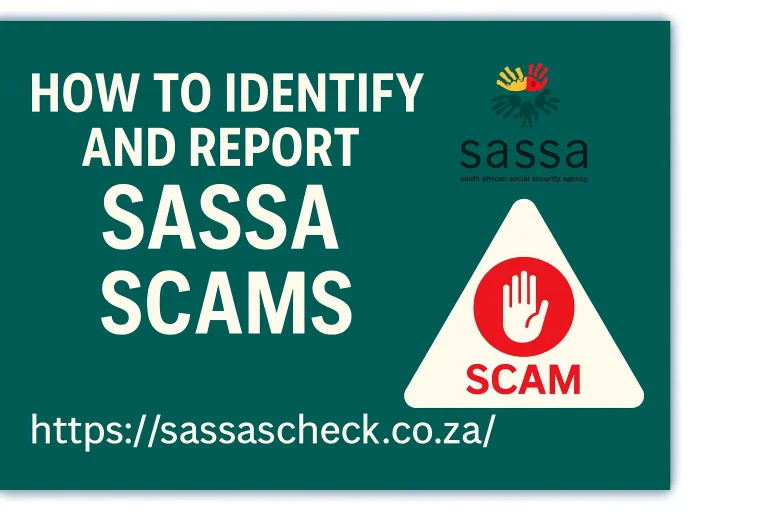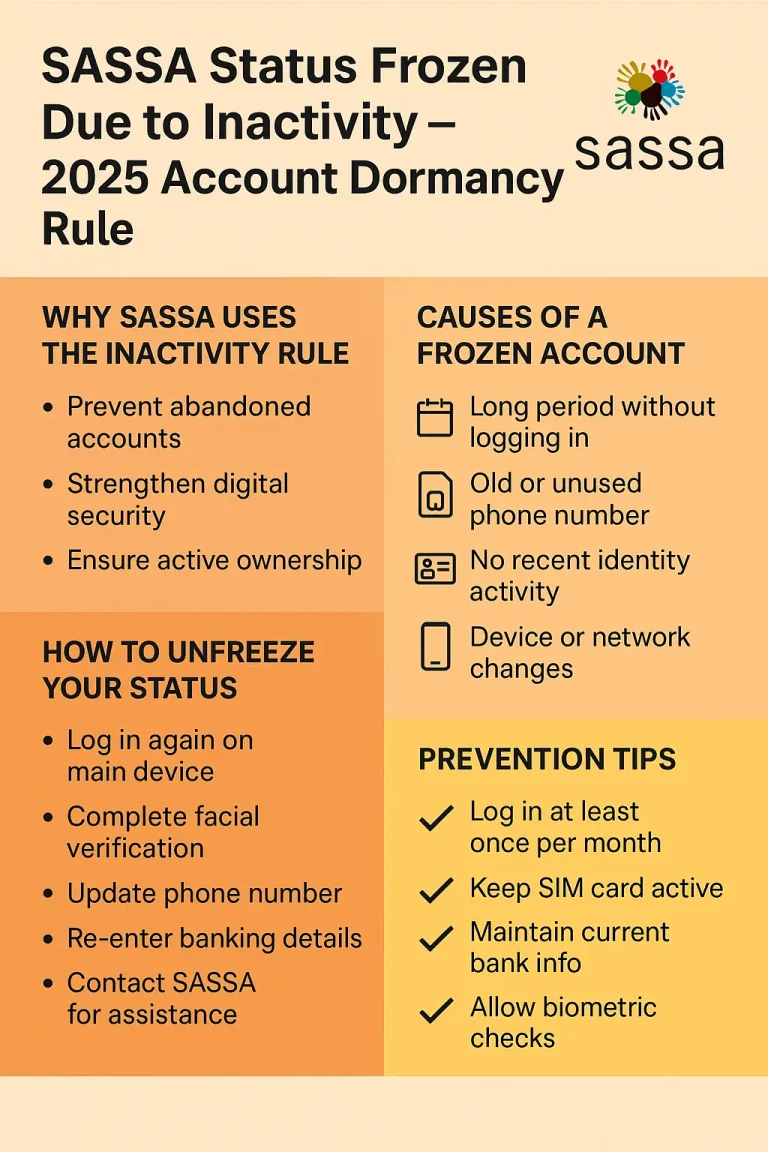SASSA Plans Biometric Verification Upgrade for Rural Provinces by 2026
For years, South Africa’s social grant system has struggled with fraud, ghost beneficiaries, and payment leakages. In rural provinces such as the Eastern Cape and Limpopo, where connectivity and infrastructure are weak, SASSA beneficiaries often face long queues, unreliable payment systems, and exploitation by intermediaries.
See Also: SASSA Status Check

To tackle these issues, SASSA is preparing a biometric verification upgrade for its payment network, with rollout expected to start in 2025. The upgrade will replace outdated fingerprint scanners with multimodal biometric devices capable of reading fingerprints, facial scans, and voice recognition. By linking each grant payout to real-time biometric checks, SASSA hopes to eliminate fraudulent claims and ensure that payments reach the right people.
Install: SASSA App
Why Biometric Upgrades Are Needed
The scale of the problem is significant. Investigations in recent years revealed that thousands of grants were being collected by deceased or duplicate identities, costing the state billions. Rural provinces are especially vulnerable, as verification systems are old and prone to failure.
Beneficiaries themselves often suffer. Faulty devices have forced pensioners to travel long distances multiple times for verification, sometimes leaving them without money for weeks. The upgrade aims to restore trust and make payments faster, fairer, and fraud-free.
How the New System Will Work
The upgraded system will use multimodal biometric verification:
- Fingerprint scans for routine checks.
- Facial recognition as backup when fingerprints are unclear (common among elderly beneficiaries).
- Voice verification for low-connectivity areas where devices can use simple phone calls for identity confirmation.
The devices will be deployed at post offices, retail partners, mobile pay-points, and community halls, ensuring broad accessibility. Importantly, they will be connected to the National Population Register, reducing duplicate identities.
Check Out (For SASSA Beneficeries): SASSA Payment Dates
Expected Benefits
- Fraud Reduction
By linking every payment to real-time biometrics, SASSA can block duplicate or fake accounts instantly. Officials estimate potential savings of R3–5 billion annually. - Improved Access
Beneficiaries in rural areas will spend less time in queues, as verification will be quicker and more reliable. - Trust in the System
A transparent, secure process will rebuild confidence among citizens who often suspect corruption in social grants.
Risks and Challenge
Despite the promise, challenges remain:
- Connectivity gaps: Many rural areas still lack stable internet. Devices must be able to operate offline and sync later.
- Privacy concerns: Collecting and storing biometric data raises fears about surveillance and misuse. Strong safeguards will be required.
- Training requirements: Local SASSA staff and retail clerks will need training to handle the new devices effectively.
Without careful planning, the rollout could suffer the same setbacks as earlier failed IT projects.
Provincial Rollout Timeline
According to internal discussions, the rollout will be staggered:
- Phase 1 (2025): Eastern Cape and Limpopo (highest fraud and technical failure rates).
- Phase 2 (2026): KwaZulu-Natal, Mpumalanga, and Free State.
- Phase 3 (2027): Remaining provinces, with national integration complete.
This phased approach allows SASSA to test the system, resolve technical glitches, and gather beneficiary feedback before scaling nationally.
Global Lessons
Biometric verification for welfare is not new. India’s Aadhaar-linked welfare system reduced fraud but faced criticism for excluding those without reliable connectivity. Kenya’s Huduma Namba project showed the risks of poor public communication.
South Africa can learn from these cases by ensuring that offline access, strong privacy protections, and clear communication campaigns accompany the rollout.
Guidance for Beneficiaries and Policymakers
For beneficiaries:
- Ensure IDs and personal information are updated with Home Affairs.
- Be prepared for biometric re-registration during pilot phases.
- Learn alternative verification options (voice, face) in case of fingerprint issues.
For policymakers:
- Guarantee data protection with independent oversight.
- Provide offline functionality in all rural devices.
- Budget for staff training and maintenance of hardware.
Conclusion
The biometric upgrade is not just a technical fix it is a structural reform aimed at rebuilding trust in South Africa’s social protection system. If implemented carefully, it will ensure that every rand of social grants goes to the intended recipient, cutting fraud and improving access for millions.
By 2027, South Africa could have one of the most advanced social grant verification systems in Africa — provided the rollout balances efficiency, inclusivity, and privacy protection.





